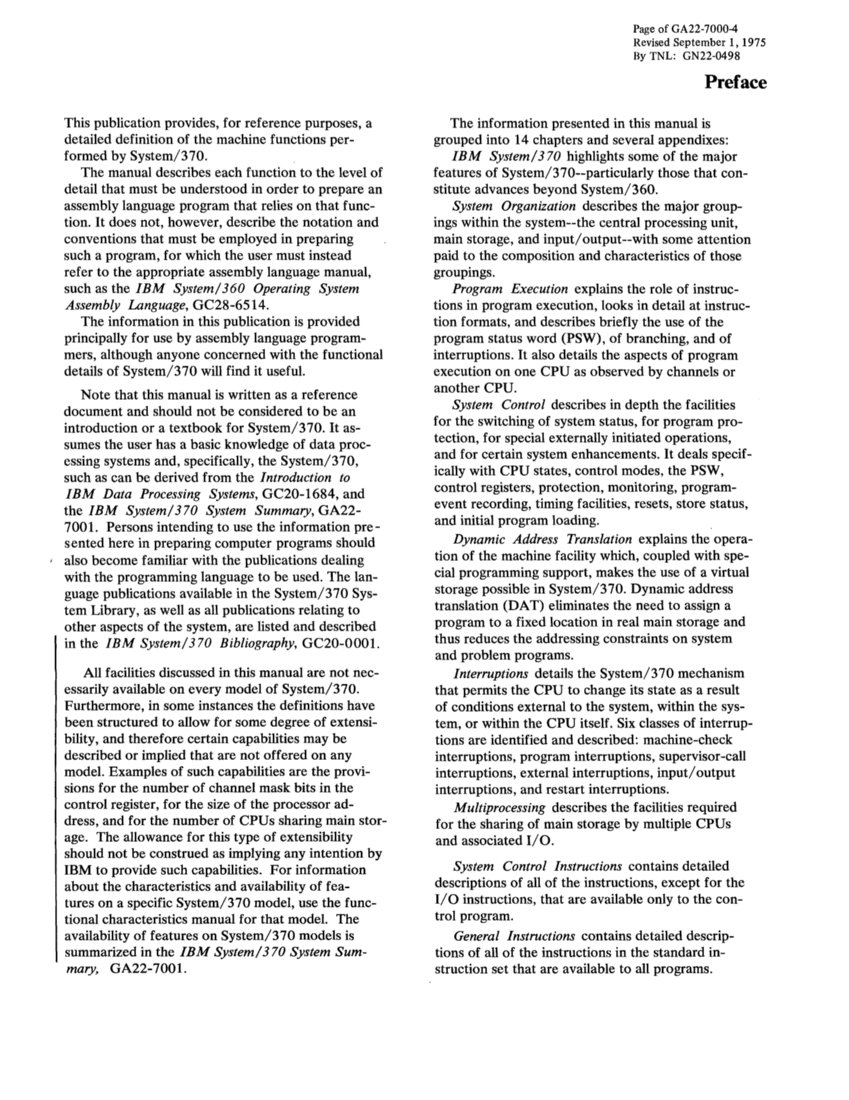Page of GA22-70004 Revised September 1, 1975 E:y TNL: GN22-0498
Fourth Edition (September 1974)This major revision obsoletes GA22-7000-3. The revision includes format changes,
corrections, and additions.
Significant technical changes are indicated by a vertical line to the left of the change.
R'equests for copies of IBM publications should be made to your IBM representative or the
IBM branch office serving your locality.
Changes are made periodically to the information herein; before using this publication in
connection with the operation of theSystem/370, refer to the latest IBM System/370 Bibliography, GC20-0001, and associated technical newsletter, for the editions that are
applicable and current.This manual has been prepared by the IBM System Products Division, Product Publica
tions, Dept. B98,PO Box 390, Poughkeepsie, N.Y., 12602. A form for readers' comments
is provided at the back of this publication. If the form has been removed, comments maybt: sent to the above address. Comments and suggestions become the property of IBM. ({;) Copyright International Business Machines Corporation 1970, 1972, 1973, 1974
Fourth Edition (September 1974)
corrections, and additions.
Significant technical changes are indicated by a vertical line to the left of the change.
R'equests for copies of IBM publications should be made to your IBM representative or the
IBM branch office serving your locality.
Changes are made periodically to the information herein; before using this publication in
connection with the operation of the
applicable and current.
tions, Dept. B98,
is provided at the back of this publication. If the form has been removed, comments may










































































































































































































































































































































